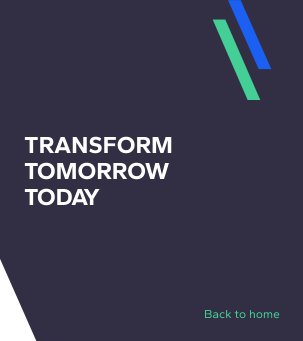Blog / Disruptive Technologies
Digital Transformation Strategies: 5 Big Companies Doing it Right
Categories

Most startups were born digital, which gives them a considerable advantage over some more mature companies who haven’t got their foot in the door when it comes to digital.
Therefore, it is interesting to explore how the giant well-established companies are applying the digital transformation tools to their strategies.
Because this is a sure way to keep their competitiveness in the market.
So let’s discover how Volkswagen, Starbucks, IKEA, Lego and Domino’s Pizza are doing it.
Digital Transformation Success Cases: Real World Examples
Thriving in the digital age is closely related to innovation and digital transformation strategies. While many companies are still struggling with how to channel their digital ambition, there are others whose strategies stand out and who thanks to embracing new technologies have strengthened their empire. In this post, we are going to take a look at the success cases from different industries.
1) Volkswagen
“We plan to make Volkswagen the most popular brand for sustainable mobility”, said CEO Ralf Brandstätter while presenting the brand’s ACCELERATE program at the end of 2021. To achieve this, the brand plans to be completely CO2-neutral by 2050 at the latest.
The most important points of this strategy are:
Restructuring its Technical Development (TD) division in Wolfsburg. This involves turning the group’s largest engineering unit, with 11,500 employees, into a company that sets the pace for the transformation of the Volkswagen brand into a technology company.
The main priority with this is completely redesigning the development process, making it interdisciplinary, fully focused on software, customer needs and the SSP, Volkswagen’s electric platform of the future, and focused on functionalities rather than individual components. The end result they envision is a customer-focused, seamless digital ecosystem that can translate direct customer feedback into new functions.
Increasing the pace of production: As software is in a position of greater relevance than hardware, this enables the teams to reduce development times by 25%, which means that in future vehicle projects will be ready in 40 months from the time the basic software architecture is in place, instead of 54 months as before.
Implementing an “Electric offensive”: Volkswagen is committed to battery electric vehicles. To the extent that, up to 2030 (kicking off in 2021), it will launch at least one new e-vehicle each year! Their plan is to, by that year, double the share of e-cars in Europe (In USA and China, they are planning for 50%).
Betting highly on autonomous vehicles. From 2026, automated driving with Level 2+, and potentially Level 4, will be possible with Volkswagen’sTrinity, an electrically powered Sedan that will set new standards in terms of range, charging speed and digitization. In the future, vehicles will continuously exchange data (on traffic, obstacles and accidents, for example) via this neural network. This way, Volkswagen is creating a self-learning system with millions of cars.
Launching a new subscription model for ID. models. In September last year, Volkswagen launched the AutoAbo in Germany for the all-electric ID.3 and ID.4 models. It is available with three-month and six-month minimum subscription periods. Thereafter, customers can terminate their subscription whenever they wish. The contract covers everything except electricity: 800 kilometres per month and a full-service package with registration, roadworthiness tests, maintenance and servicing, insurance and road tax.
Establishing joint ventures with China to quickly develop the latest technologies through to market maturity, and to bring technologies to higher volumes.
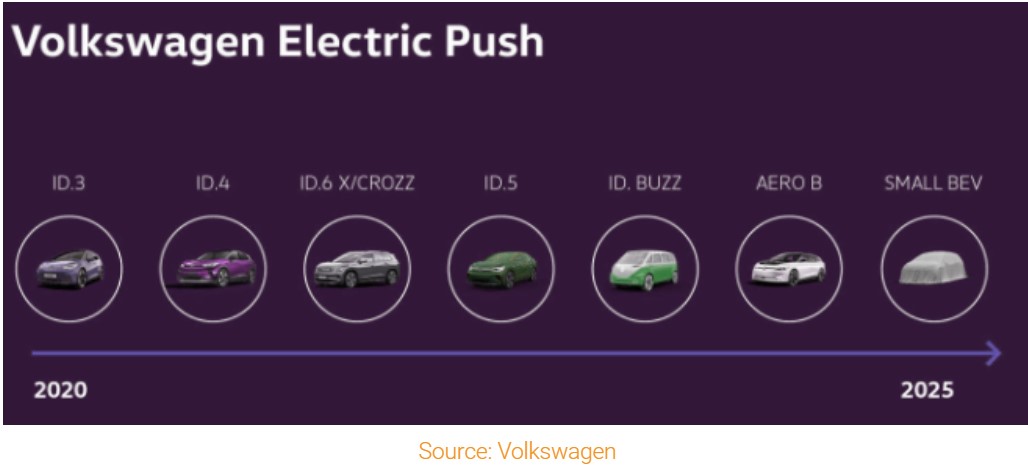
2) Domino’s Pizza
Listening to clients feedback and embracing digital permitted Domino’s to be crowned the largest pizza company in the world and to finally pass its old rival Pizza Hut. Therefore, there is no surprise that today four-fifths of Domino’s sales come from digital channels.
To arrive where they are today, Domino’s changed the company’s entire ethos, transforming it from a fast food business into a company imbued with programming hires, digital marketers, and other tech personnel. The entire corporate structure was also revised and the focus shifted towards digital sales and advertising. It was crucial that everyone at the top, from the Board of Directors to the CEO, was on board.
Let’s break down some of the company’s digital initiatives:
Multichannel approach to customer experience. The aim of the brand is to allow clients to order pizza with just about any device or service they can name. In 2015 Domino’s launched Anyware, which allows customers to order from anywhere and anytime through a device: Amazon Echo, Google Home, Siri, Smartwatches, Smart TVs, Slack, Facebook Messenger, Twitter, etc. And in 2020 the brand launched its new app, which enables group ordering and better promotion of deals. The app alone accounted for 42% of system sales, a 2.2 percentage point increase in 2020.
Streamlining the purchase: reducing friction to the point of “zero click” ordering. In the words of the CTO: “If you’re a loyal customer, you don’t have to do anything to order a pizza”.
Using AI to increase sales. Domino’s cutting-edge artificial-intelligence ordering bot, Dom, allows customers to place orders with little effort. In 2020, this AI success pushed them to make a substantial investment in migrating from CPUs to GPUs in order to improve the accuracy rate of predicting when a customer’s pizza would be ready. With CPUs, it took three days for Domino’s to train an algorithm to predict when orders would be ready. Using GPUs, the company was able to train the same algorithm in less than an hour. These enhanced algorithms improved delivery time accuracy from the previous 75% to 95% accuracy rate by leveraging a load-time model that factors in labour variables such as how many managers and employees are working, the number and complexity of orders in the pipeline, operational factors, and even current traffic conditions to improve the order-ready accuracy rate.
Expanding the delivery service: driverless, e-bikes, and carside options. In 2016 Domino’s shocked the world with the first ever Drone delivery of pizza in New Zealand. In 2019, Domino’s invested in two digital-first innovations to make the delivery process smoother: delivery via autonomous vehicle and delivery via electric bikes. During the 2020 pandemic, this was of huge help for the company: takeout and delivery saw a 148 percent increase compared to level before the covid-19 outbreak. That same year the company launched “Domino’s Carside Delivery service”, giving people the option to stay in the vehicle while their order is delivered at any location of the vehicle of their preference. And recently, it has struck a partnership with Nuro to deploy self-driving delivery vehicles (currently testing in Houston).
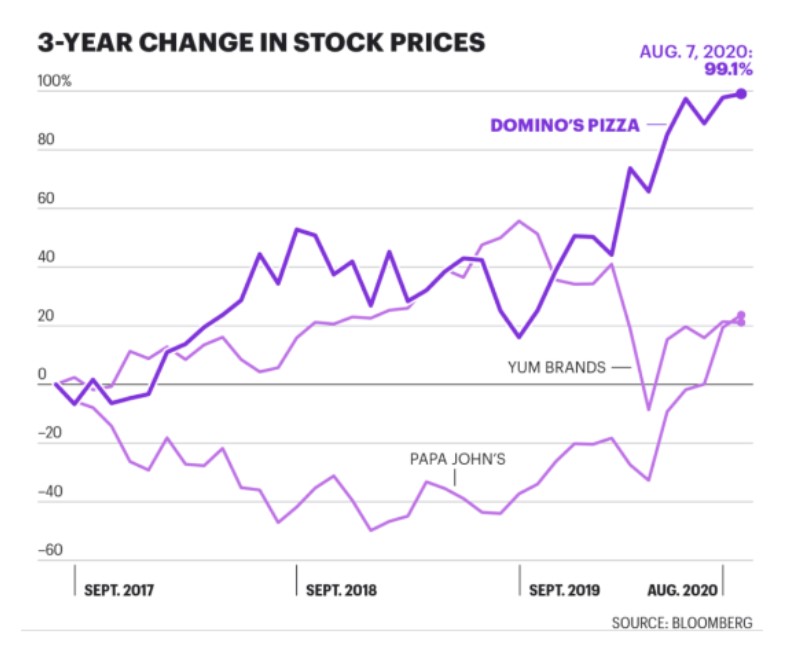
Using tracking to increase customer satisfaction. It’s actually called the Domino’s Tracker, a web- and app-based way for consumers to track their orders. Apart from improving delivery times and getting more orders out the door, the technology also allows managers to view where their delivery experts are on the road, making in-store logistics more manageable. Now it is a common practice, but when the company launched it in 2008, it was innovative, revolutionary, and first of its kind! The brand has now refined and expanded their system. “You can take a picture of the pizza, run it through an A.I. bar and it will tell you the quality of the franchisee. It’s amazing”, explains Ray Wang, founder of Silicon Valley based Constellation Research Inc.
A successful rewards program. The digitisation of this project allowed the company to create a personalised buying experience for their consumers and built customer loyalty.
Merging the digital and marketing teams. This recent managerial decision happened in 2021, with the aim of “supporting increased digital investment and driving growth”, according to CMO Sarah Barron. A move that shows us how a successful digital transformation strategy is not just about technology, but also about team management and efficient human resources care.
3) Starbucks
In addition to exceptional customer service, Starbucks owes its success to tech investment. As former CEO Kevin Johnson highlighted in an interview, “We continue to build and leverage our technology first mobile and digital capabilities and accelerate growth in active Starbucks Rewards membership. We grew our 90-day active Starbucks Rewards members representing our most loyal and engaged customers by approximately 30% in FY2021 to 24.8 million members.”
The digital transformation strategy of the company includes various areas:
Seamless integration between online and offline. Even before drive-thru and pickup sales took off during the pandemic, in 2019 Starbucks opened its first pickup only location in the United States. “Our vision is that each large city in the US will ultimately have a mix of traditional Starbucks cafés and Starbucks Pickup locations,” said Starbucks in a statement in 2020. The company understands the importance of having a network of offline locations to add to the convenience factor of shopping online. After the pandemic, Starbucks announced in 2020 it would close 400 locations and then open 300 new stores that focus on drive-thru and pickup. Of the 300 new stores 40 – 50 were slated to be drive thru or curbside pickup only locations.
An amazing mobile app. In 2009, Starbucks launched Starbucks Card Mobile application and MyStarbucks app, in a time when apps and mobile payments were not as extended as today. From then on, the company has refined the app and has transformed it into a pillar of its digital transformation strategy. Did you know that it has the largest number of users in the US after Apple pay? There is a reason for that. The app has 4 great features: a user-friendly home screen, with easy accessible information and a clean layout; a great tool to customise orders (complete without being overwhelming); a clear loyalty program with many ways to accumulate and spend points; and a smooth payment process.
Intelligent use of data. Starbucks’ digital strategy, and its innovative use of data analytics, in particular, remain at the forefront of its growth and continue to pay off. Since 2008 Starbucks has taken a much more analytical approach when it comes to placing their stores. They are now using data like population density, average incomes, and traffic patterns to identify target areas for a new store. Actually, the company’s true competitive advantage is its trove of exclusive customer data from Starbucks Rewards loyalty program with its more than 14 million users.
AI-powered personalised product offerings & discounts. For example, the company uses the Barista chatbot, where customers, through the mobile app, can place orders via voice commands or messaging, providing unmatched speed and convenience. The app itself also rewards customers based on the frequency of their orders. AI also allows Starbucks to determine new store locations.It uses location-based analytics powered by Atlas, a mapping and business intelligence tool developed by Esri, to arrive at the most strategic locations for its new stores based on customer demographics (i.e. spending power, income, population, etc.).
Immersion into Web3. “We plan to start with our first NFT collection, membership and community later this year, based on coffee art and storytelling. It will come with a host of unique experiences and benefits, worthy of a genesis NFT collection from Starbucks”, explained the company in their website in 2022.
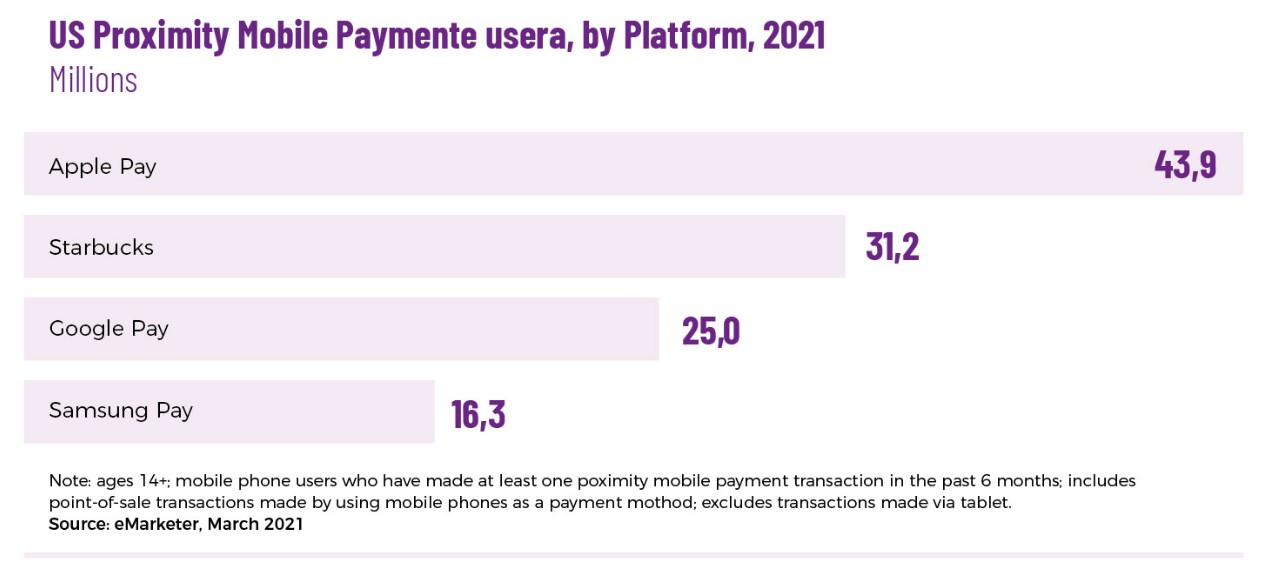
4) IKEA
The Swedish furniture giant is also taking steps to stay relevant and competitive in the future. By providing innovative and highly valuable experiences for both online and offline customers, IKEA has taken the first steps on the path of transforming into a tech company.
Augmented Reality for a better customer experience. In 2017, the IKEA Place app, an augmented reality tool that allows users to visualise how furniture will look in their own home, was launched. This helps the customers to try out different options beforehand and decide on what to purchase. This app has been downloaded 2 million times and been widely used.
Entering Smart Homes. Ikea has also entered the smart home market and is offering speakers and smart plugs. The development of this kind of products, services, and strategies will allow IKEA to compete better in the future.
24/7 Ecommerce. “We have transformed our stores to also act as fulfilment centres. To make that work, the flow of goods needed to change, the supply mechanisms needed to change, and also the floorplans of the store needed to change. Ecommerce is open 24 hours a day, while traditional stores are not, which means we’ve needed to learn how to operate at two speeds, while operating from one space. Goods can be delivered from the stores, or from different distribution centres — and algorithms are helping figure out where the goods are being sourced from. We’re rapidly expanding data and analytics and changing how they’re embedded in decision making”, explained Barbara Martin Coppola, former Chief Digital Officer (she left this year, but the process continues in place).
Apps to streamline the purchase process.The “Shop & Go” feature in the IKEA app, for example, available in a few countries to date, allows users to use their own mobile device to scan, pay for items and skip the checkout line in the store. That required a complete modernization and reengineering of all the tech landscape within IKEA.
Centering the cloud. The cloud is a central tool in Ikea’s digital transformation, indispensable to manage significant volumes of web traffic and online orders.
Staying relevant. As we’ve seen in other posts, and as our MBA students know very well, digital transformation is much more than technology. It’s a process and a mindset, and it involves a commitment to evolve with the ever-changing needs of customers. In the words of Martin Coppola: “the process is a bit like an iceberg. At the top of the iceberg, we have the customer needs and adaptation — revamping everything around customer interaction and new purchasing journeys — and under the surface we are making huge changes to our business and operating model. And what is under the surface is a much bigger change than what we see above”.
Reinforcing the offline experience. Although historically located in city outskirts, the Ikea Group has, in the last three years, embarked on a strategy to develop urban centres in order to adapt to consumers’ changing lifestyles (it has invested almost €6 billion towards this objective over the 2018-2021 period).
Investing in sustainable actions. Innovation means embracing change and staying up to date with present and future challenges. Ikea has done that with a series of eco-friendly initiatives: banning single-use plastic products completely from all IKEA stores worldwide, for example; or designing furniture with fewer parts, such as their new sofa frame, which uses just 13 assembly parts instead of 122. The company has also launched some sustainable household products, such as the MISTELN water nozzle developed together with the start-up company, Altered, which can dramatically reduce home water usage by up to 90% and can be applied to every standard tap.
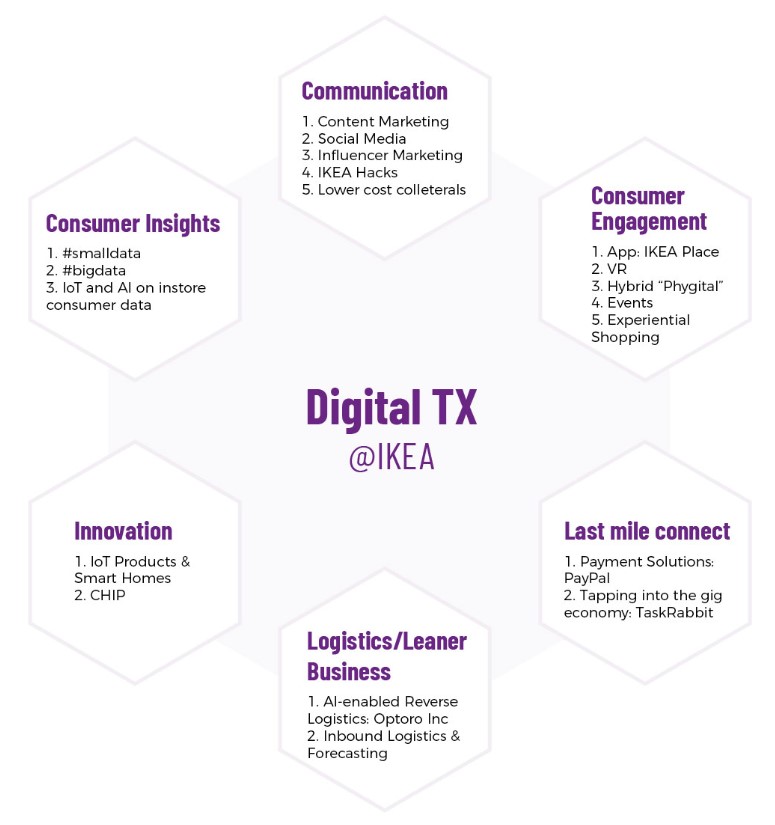
5) LEGO
Through movies, mobile applications and mobile games, LEGO has managed to appeal to today’s digitally savvy consumer groups. An updated digital strategy helped the company to escape the brink of bankruptcy and to start to thrive.
By now, it has achieved many content marketing triumphs that most other brands would kill for and a social strategy that puts the majority of its focus on community engagement.
Betting on community engagement. LEGO’s online community allows fans to submit their own ideas for new sets and vote on the suggestions that they like the most. If a project gets 10,000 votes, LEGO reviews the idea, picks a winner, and creates a new LEGO set that is sold worldwide. This means that LEGO has recognized that its customers are its greatest source for new ideas and innovations. This approach has helped the company to keep releasing new product ranges that its fans love and helped to maintain a close relationship with its customers around the world.
Involvement in STEAM educational initiatives. Through the LEGO® Learning System, the company proposes to rethink STEAM learning and allow young people to learn in a fun way through their products. They focus on 3 main areas: STEAM Knowledge (Computer Science, Engineering Design, Physical Science, Coding), Academic Practices (Scientific, Mathematical, Computational Thinking, Mechanical Engineering) and 21st Century Skills (Creativity & Divergent Thinking, Critical Thinking & Problem Solving, Collaboration & Teamwork, and Confidence & Resilience).
Catering to the digital needs of each of their key user groups. “We want to be product-led, engineering-led, and architecture-led in everything we do; so, we’re introducing the concept of digital products to the Lego ecosystem, and we’re doing this for all of our user groups”, explained CDTO Atul Bhardwaj in a recent interview. The four key user segments they focus on, he said, are: consumers, shoppers, partners, and colleagues. For colleagues, for example, they are moving to the cloud, building modern APIs so that their systems can talk to each other in a more modern way. And for shoppers, they have developed a consumer-centred mobile app that takes Legos building manuals online and has already had 9.7 million downloads.
And, because Lego’s consumer group comprises both kids and adults, they’re building separate “engagement platforms” for each audience.Selling unique brand experiences. LEGOLAND park is a clear example. This chain of LEGO theme parks, operated by Merlin Entertainments, is present in Denmark, UK, California, Germany, Malaysia, Dubai and Japan (and future plans involve New York, Hong Kong and South Corea). “How does the land of LEGO manifest itself through these great play ventures? Part of my job is taking that world from the toy category and bringing it to life in the world of location-based entertainment”, declared Ash Tailor, responsible for global marketing and brand development. Recently, at Legolang Windsor, the company launched Lego Mythica: World of Mythical Creatures an immersive land home to rides, attractions and experiences, including the UK’s first flying theatre ride: Flight of the Sky Lion.
Long-term digital ambitions: In the beginning of 2022, LEGO opened a new digital office in Copenhagen for up to 400 colleagues that nearly tripled the size of its digital team. The new office building will become a cutting-edge innovation workplace and create room for more colleagues within product innovation and product technology development in what will be called Innovation Campus.Plus, their digital offices in London and Shanghai were also expanded to accommodate the growing team. All these measures have the clear aim of accelerating digital transformation. In fact, the company is currently looking for talented Engineers, Product Managers, UX/UI Designers, Technical Program Managers, Digital Security Specialists and Data Scientists to join the challenge.
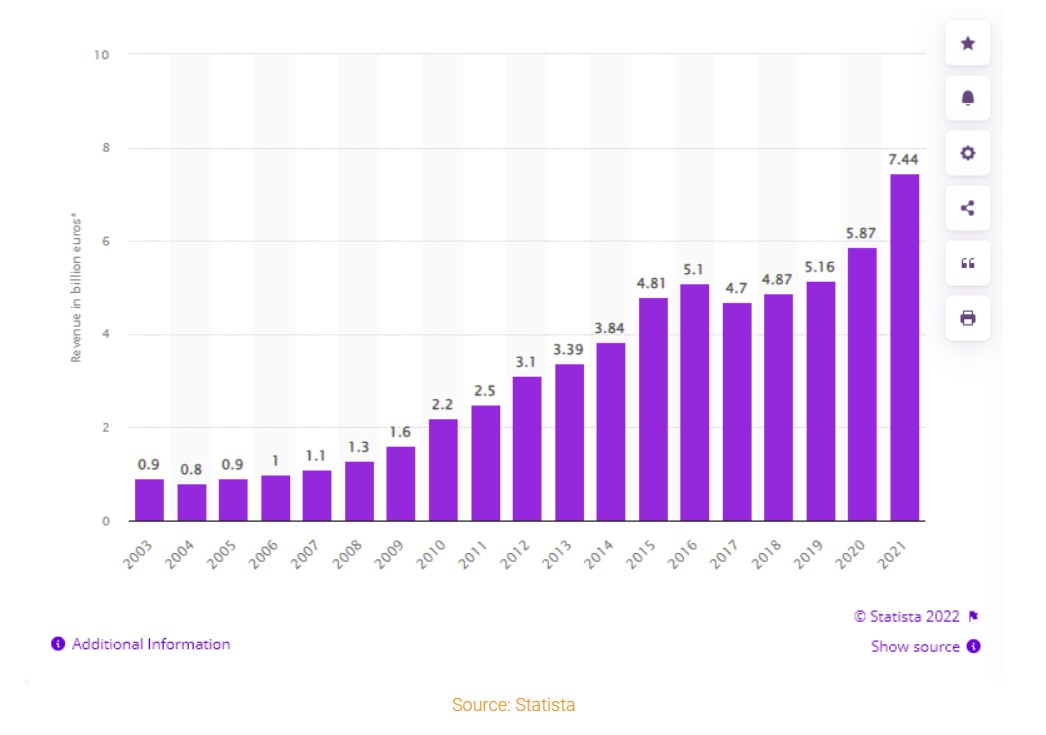
Hope you found these examples of digital strategy useful and insightful.
The digitalization of companies is a winning strategy for today’s digital economy.
And you don’t have to be a big and well-established company like Volkswagen and Starbucks to do it (though you can definitely find inspiration in them!). You can start transforming your processes right now, regardless of your size and budget.
The important thing is to start where you are, and begin scaling from there.
That’s what we teach in our Global MBA in Digital Transformation: digital strategies for your business.
With top executive experts that act as your mentors and advisors.
Check the program out!
Get involved in the Digital world and Implement Digital Transformation Strategies to your company’s processes!


